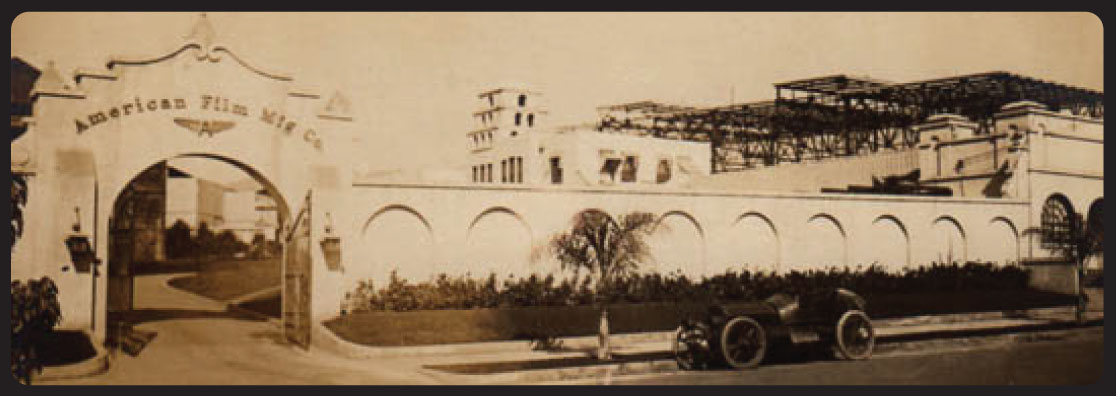
The American Film Manufacturing Company began in the fall of 1910. The word manufacturing would be dropped from the title in 1915, reflecting the industry’s awareness that there was more to the new world of moving pictures than mere construction.
Known to the public by its nickname Flying A, the company would grow from a young aggressive independent, at war with the licensed manufacturers such as Biograph and Edison, to a major force in its own right, along side competitors like Metro and Universal.
This page leads to stories about the four significant places in the company’s growth and prosperity..
Please feel welcome to contact us if you have any material to share
Chicago, Illinois
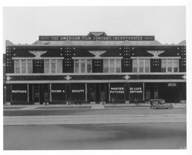 The American Film Manufacturing Company was founded in Chicago. The Second City would remain the company's base of operations throughout its corporate life. Samuel Hutchinson, John Freuler, Charles Hite and Harry Aitken, four mid-western exchangemen, joined forces and capital to create a production company to supply their various exchanges. The initial production staff, both in front and behind the camera, came almost exclusively from the ranks of the Essanay, a "licensed" production company that also called Chicago home.
The American Film Manufacturing Company was founded in Chicago. The Second City would remain the company's base of operations throughout its corporate life. Samuel Hutchinson, John Freuler, Charles Hite and Harry Aitken, four mid-western exchangemen, joined forces and capital to create a production company to supply their various exchanges. The initial production staff, both in front and behind the camera, came almost exclusively from the ranks of the Essanay, a "licensed" production company that also called Chicago home.
The Flying A's initial productions were filmed at the leased studio of the defunct Phoenix Company in the fall of 1910 but by early 1911 the well financed American had moved into its own studios. Three shooting companies were created. Two would work at the studio or surrounding locales while the third unit was sent out to concentrate on westerns. This western unit would move through the southwest with stops in New Mexico, Arizona and finally California. The unit would eventually set up shop in the town of La Mesa.
By 1913 Chicago would cease to be used for production as all energies were aimed at the company's new, modern facilities in Santa Barbara. Yet all the other essential areas of the business remained in Illinois, from release printing to promotion. Chicago’s significance was strengthened even further when their distributor, Mutual Film Corporation, relocated from New York in 1914.
American’s Chicago office oversaw a flow of films throughout the world and maintained additional offices in Paris and London.
Southern California and La Mesa
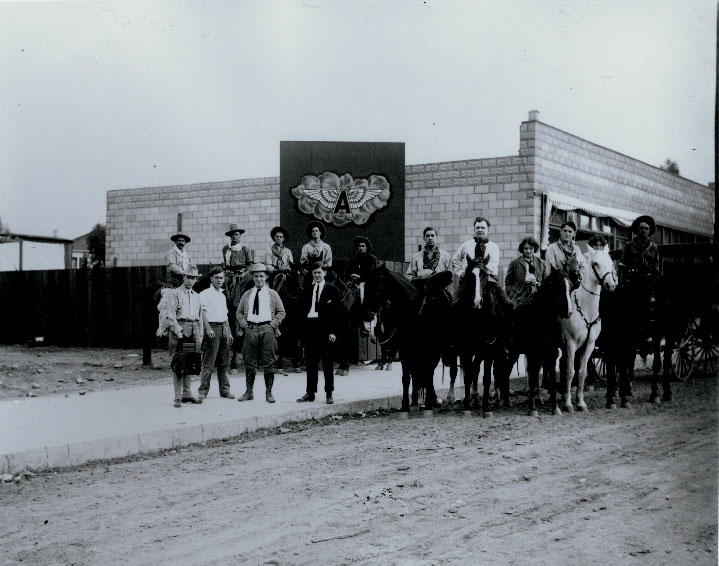 After initial production in the San Juan Capistrano area and a longer stay in Lakeside the Flying A’s western unit, headed by Allan Dwan, established an office at La Mesa, California in 1911. This allowed locations throughout the El Cajon valley. The nearby beaches also served for many of the one reel settings but La Mesa lacked the urban and suburban backdrops which would open up a broader range of scenarios.
After initial production in the San Juan Capistrano area and a longer stay in Lakeside the Flying A’s western unit, headed by Allan Dwan, established an office at La Mesa, California in 1911. This allowed locations throughout the El Cajon valley. The nearby beaches also served for many of the one reel settings but La Mesa lacked the urban and suburban backdrops which would open up a broader range of scenarios.
London, England
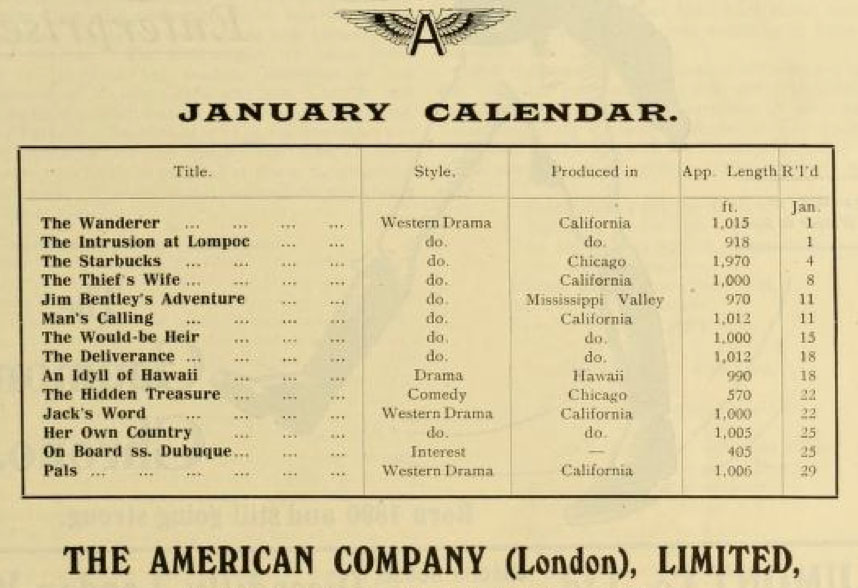 Although the Mutual Film Corporation handled American’s distribution for both the United States and Canada from 1912 to 1918 the American Film Company, London distributed everywhere else with truly worldwide reach.
Although the Mutual Film Corporation handled American’s distribution for both the United States and Canada from 1912 to 1918 the American Film Company, London distributed everywhere else with truly worldwide reach.
The London office was opened in 1911. There was no studio and the office functioned solely as a distributor. It is likely that the large collection of films by American held by the BFI is due to the fact that inventory of the London office was never returned to Chicago after the office closed in 1920.
Santa Barbara, California
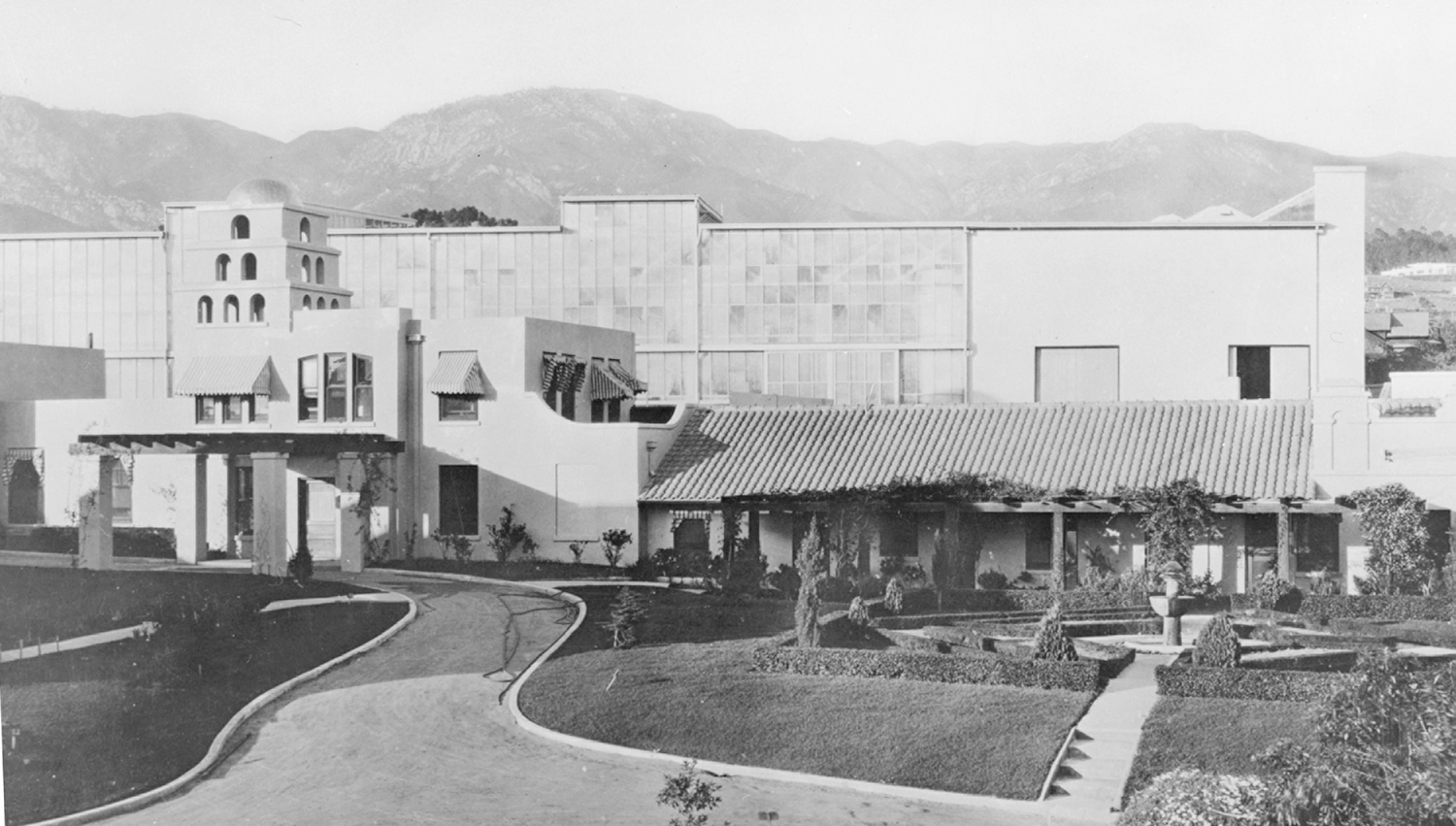 The Flying A arrived in Santa Barbara, California on July 5th, 1912, headed by Allan Dwan. The western company had already developed into a nationally known producer having released nearly two hundred films. Santa Barbara offered a tremendous variety of locales, both natural and constructed. The town had been used occasionally by other producers but only in passing. American chose to settle and invested in property to construct a permanent studio
The Flying A arrived in Santa Barbara, California on July 5th, 1912, headed by Allan Dwan. The western company had already developed into a nationally known producer having released nearly two hundred films. Santa Barbara offered a tremendous variety of locales, both natural and constructed. The town had been used occasionally by other producers but only in passing. American chose to settle and invested in property to construct a permanent studio
The studio predicted the Spanish revival trend in architecture that would become a Santa Barbara trademark over a decade later. More importantly the studio allowed for the company to grow both in personnel and in production volume.
Along with the westerns, American established units to produce comedies, period dramas, adventure stories and romances. At first these efforts were all one and two reelers but in the fall of 1914 they would release their first feature, Damaged Goods, a seven reel social drama.
By this time the original staff had mostly departed, replaced by such players as Harold Lockwood, May Allison and Margarita Fischer. The studio flourished during these years prior to the United States’ entry into World War I. The studio had become the town’s largest employer.
